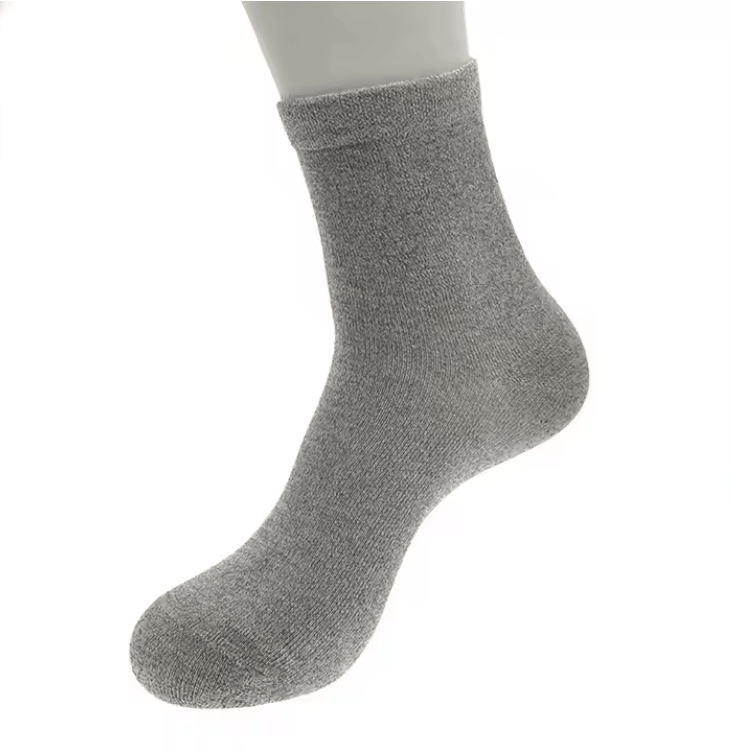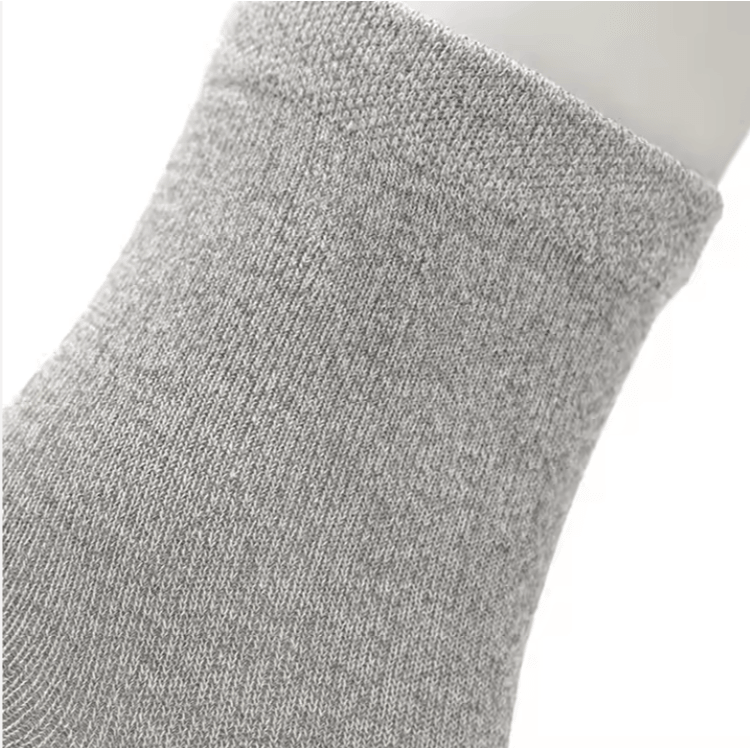anti static socks

Why Do You Need Anti-Static Socks?
Anti-static socks are designed to prevent the buildup and discharge of static electricity, especially in ESD (Electrostatic Discharge) sensitive environments. They work by providing continuous grounding, reducing the risk of static-related damage and personal discomfort.
1️⃣ Benefits of Anti-Static Socks
✅ Prevents Electrostatic Discharge (ESD)
Protects sensitive electronic components (e.g., semiconductors, PCBs) from damage.
Essential in cleanrooms, electronics manufacturing, and data centers.
✅ Enhances Safety
Reduces the risk of static shocks in dry environments.
Minimizes fire hazards in explosive or flammable workplaces (e.g., chemical plants, gas stations).
✅ Improves Comfort & Grounding
Works alongside ESD shoes or grounding straps for better conductivity.
Ensures continuous discharge of static electricity, even if shoes are non-conductive.
✅ Required in ESD-Safe Workplaces
Helps meet ESD protection standards like IEC 61340-5-1 and ANSI/ESD S20.20.

2️⃣ How Do Anti-Static Socks Work?
Made with conductive fibers (e.g., carbon, silver, or copper threads) that help dissipate static charges.
Worn with ESD shoes or grounding systems to ensure effective charge dissipation.
Some designs include moisture-wicking properties for added comfort.
3️⃣ Where Are Anti-Static Socks Used?
📌 Electronics Manufacturing – Prevents ESD damage to microchips & circuits.
📌 Semiconductor Industry – Ensures static-free environments for wafer fabrication.
📌 Cleanrooms & Labs – Protects precision equipment from static interference.
📌 Data Centers & IT – Prevents data corruption & hardware damage.
📌 Industrial & Chemical Plants – Reduces static-related fire risks.
4️⃣ How to Choose Anti-Static Socks?
🔹 Material – Look for conductive fibers like carbon, silver, or copper.
🔹 ESD Certification – Ensure compliance with IEC 61340-5-1.
🔹 Comfort & Durability – Choose breathable, moisture-wicking fabrics for long hours of wear.
🔹 Compatibility – Must work with ESD footwear for full protection.
Conclusion
Anti-static socks provide an extra layer of static protection, especially in ESD-sensitive workplaces. While ESD shoes are the primary defense, socks enhance conductivity, ensuring consistent grounding and safety.
Would you like recommendations for high-quality anti-static socks? 😊
anti-static socks enhance conductivity by using conductive fibers (such as carbon, silver, or copper) to help dissipate static electricity. They work by maintaining a connection between your feet and ESD flooring or grounding systems, ensuring consistent discharge of static charges.
While ESD shoes provide the primary protection, anti-static socks improve grounding reliability, especially when:
✔ You move frequently in an ESD-protected area (EPA).
✔ There's a risk of static buildup due to dry environments.
✔ You're wearing ESD shoes with insulative inner linings, where socks help bridge the conductivity gap.
For maximum effectiveness, anti-static socks should be used alongside ESD footwear and tested regularly for conductivity.
Would you like recommendations for anti-static socks that meet industry standards? 😊
